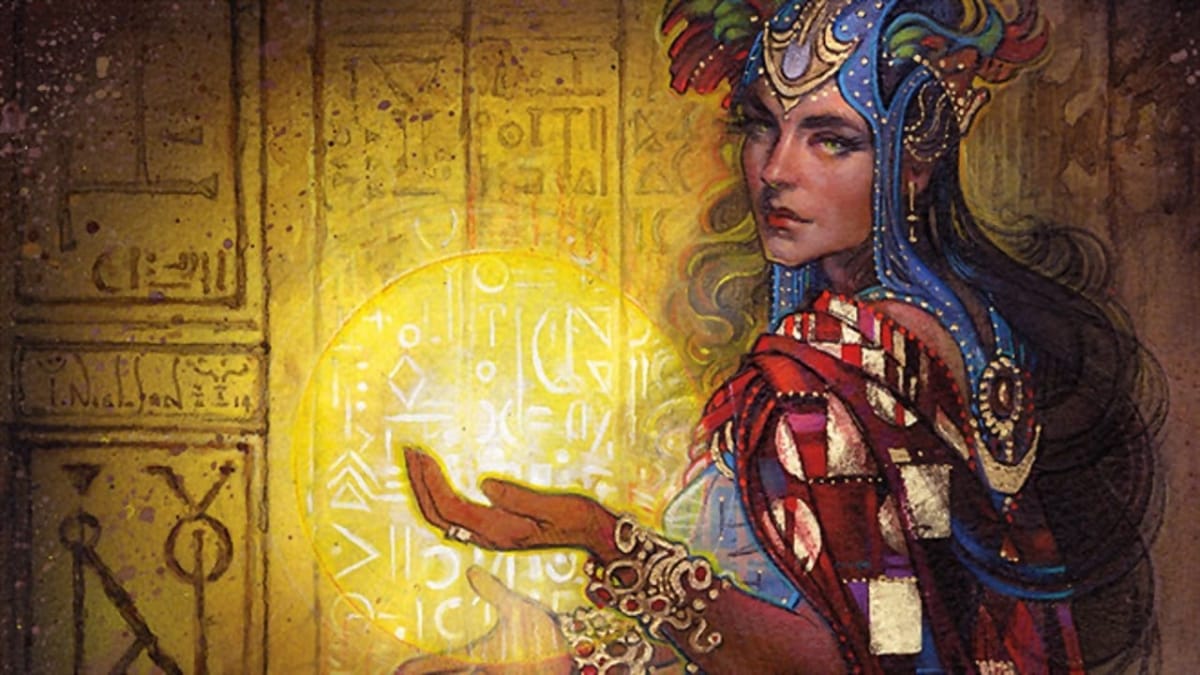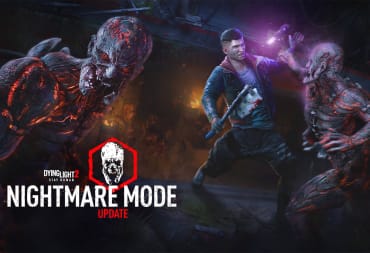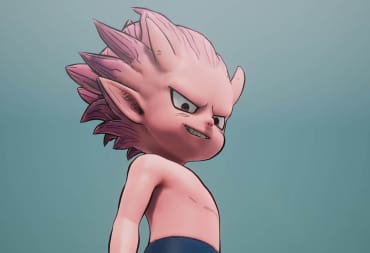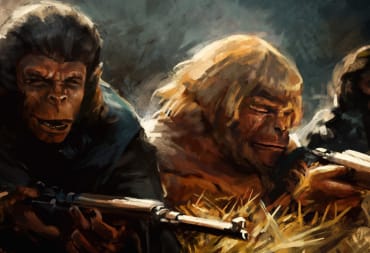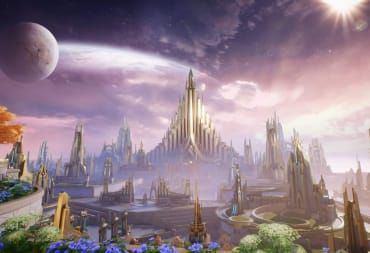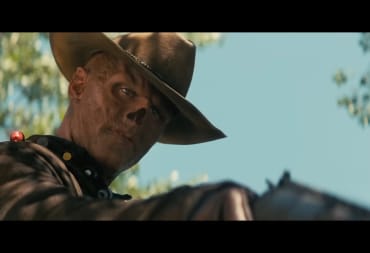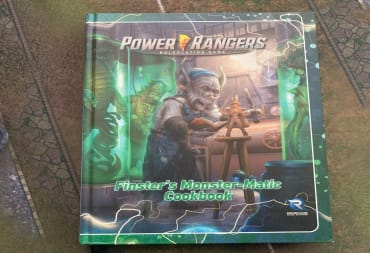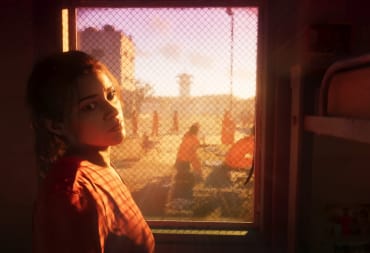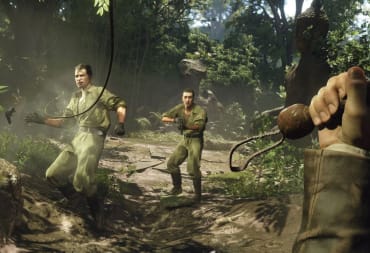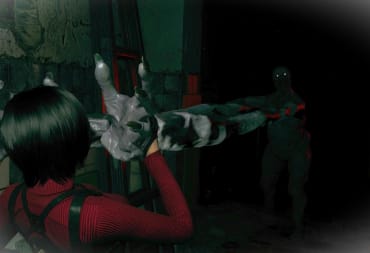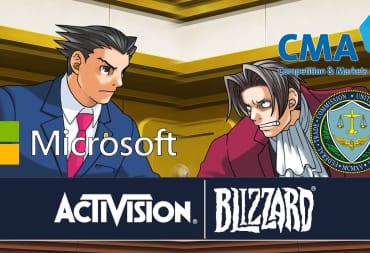In our last entry in TechRaptor's Magic: The Gathering archetype primer series, we took a quick look at the nine different archetypes that could be found within competitive play. As a reminder, those nine archetypes consist of three general archetypes (Aggro, Control, Combo) and their permutations (Aggro-Combo, Combo-Aggro, Combo-Control, Control-Combo, Control-Aggro, Aggro-Control). And again, this archetype primer series is only looking at decks in the Modern Magic: The Gathering format - Legacy and Vintage decks will be covered at another time, and Standard consists of Control, Aggro, and Aggro-Control making it a poor learning environment for the purpose of this series.
The below infographic illustrates each of the nine archetypes and what qualities they possess (when decks want to win, how decks want to win, and how they interact with their opponent).
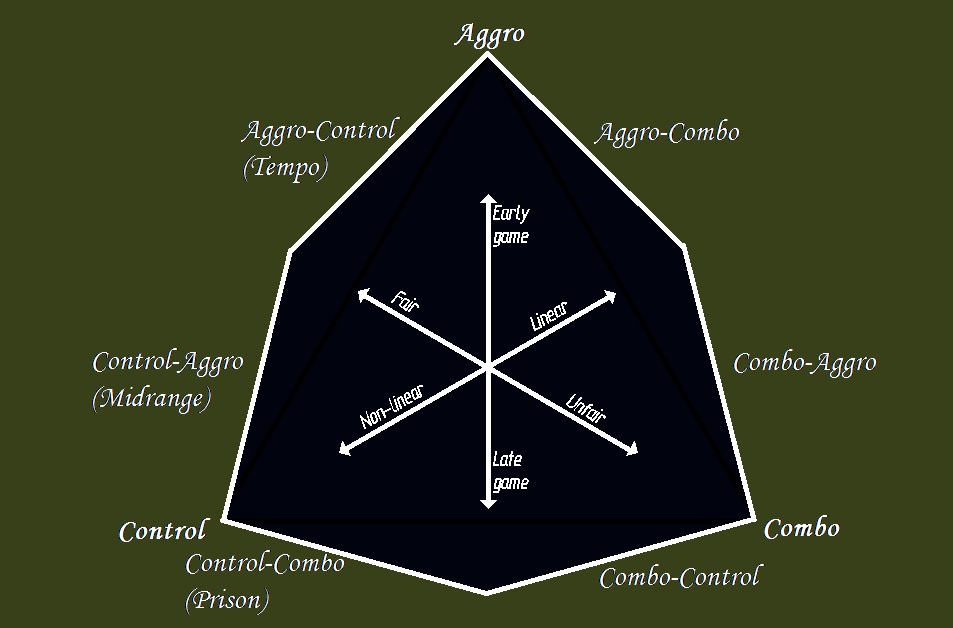
This week, we'll be taking a look at the Aggro archetype and at one of its representative decks, Mono-Red Burn. Now, I'm sure some of our readers who are familiar with the Modern Magic: The Gathering format will be asking "why aren't you using Naya (Red/White/Green) Burn for this article?". It's true, Naya Burn does see much more play than Mono-Red Burn and is significantly stronger, but we're using Mono-Red Burn for this archetype primer series for a few reasons.
First, Mono-Red Burn is much cheaper to build than its Naya counterpart; as the Mono-Red Burn deck only runs Mountains in its land base, the cost to build is much lower than Naya Burn, while still remaining competitively viable. Secondly, upgrading Modern Mono-Red Burn to Modern Naya Burn (or even Legacy Burn) is very easy and a good way to test out a deck that sees real usage while deciding if Aggro is the right archetype for you to play in. Finally, certain sideboard cards like Blood Moon are great to use in an environment that relies heavily on non-basic lands like Modern.
However, it is undeniable that Naya Burn is significantly stronger than the Mono-Red variant; it's much more prepared to deal with burn hate than Mono-Red is, and has access to necessary removal cards such as Path to Exile. Even the most skilled of players would have a hard time winning a Grand Prix , Pro Tour Qualifier, or other high-level competitive Magic: The Gathering event with Mono-Red Burn. However, for players just entering Modern, or looking to buy a cheap deck for Magic: The Gathering Online or Friday Night Magic, Mono-Red burn is a good deck with a proven track record that can be easily upgraded into stronger variants if and when players decide that it's the deck for them.
This doesn't mean we won't be covering Modern Naya Burn in a future article, of course; it's just that for the purpose of this article, Mono-Red Burn satisfies our needs much more.
Before we cover Mono-Red Burn in earnest, we need to figure out how the Aggro archetype works. So, let's begin: what is the Aggro archetype?
Magic: The Gathering Archetype - Aggro
Aggro is an aggressive archetype that focuses on winning games very early through the use of small creatures (typically with Haste) and cards that can deal damage to either creatures or players ("burn" cards). Decks in the Aggro archetype are linear - they try to win games with as little interaction with the opponent as possible - and tend to win by using "fair" strategies, advancing towards victory by improving the board state in their favor, and trading cards one-for-one with the opponent.Aggro archetype decks carry "redundant" cards - cards with the same, or similar, effects to each other. Playing redundant cards means that counter spells don't slow us down very much, and it also maximizes the potential value of each of our card draws. In Mono-Red Burn, we do that with burn spells - low cost damage spells that can be aimed at creatures or opponents.
In general, decks in the Aggro archetype are strong against Control archetype decks; because Aggro decks carry redundant cards, disruption doesn't affect us as strongly as it would for Combo archetype decks. Aggro decks are also able to achieve victory despite Control decks trying to slow us down by exhausting our resources, by playing our spells on the end of their turn, leaving them open to attacks and damage to the face on our turn.
On the other hand, Aggro decks are weak against Combo decks; because Aggro decks play very linear games, they typically don't have the disruption needed to stop Combo's win-condition when it "goes off". Playing Aggro decks against Combo decks requires the player piloting it to outpace their opponent, dealing lethal damage before the Combo player can assemble the cards for their win condition.
A common complaint that is leveled against Aggro archetype decks, Burn in particular, is that they're "autopilot" decks that require very little skill to successfully pilot. While it is true that Aggro decks do have smaller decision trees than Control - and especially Combo - decks do, that doesn't mean piloting an Aggro deck to victory is guaranteed. Mono-Red Burns first turns want to see us getting one of our cheap creatures onto the battlefield, and then using our burn spells to either remove an opponent's threats, or hit them in the face while we swing for damage with our creatures. Other decks in the Aggro archetype follow similar strategies - Green/White Bogles puts small creatures with Hexproof out, and then starts attaching redundant Aura Enchantments culminating with Daybreak Coronet.
Many new players make the mistake of not pacing their burn spells, leading to them dumping their hand too early. Any mistakes that Burn players are hard to come back from; misplaying cards, playing into counter spells instead of waiting, or not choosing to take out Turn 1 ramp cards like Noble Hierarch or Birds of Paradise can very easily spell defeat for us.
Knowing this, let's take a look at Mono-Red Burn in depth. What cards do typical builds use?
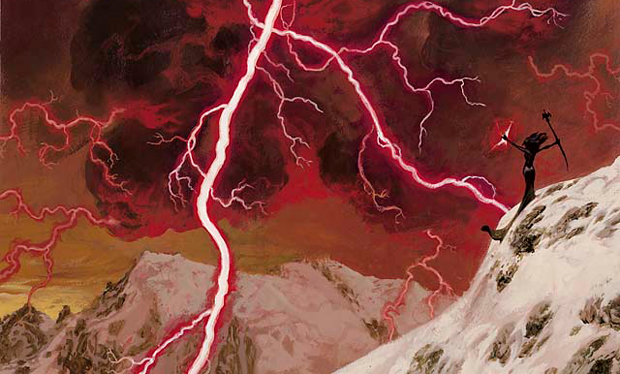
Mono-Red Burn Cards: Lands and Creatures
Mono-Red Burn has a very simple land base: we're using only Mountains. Don't try to run multiple playsets of fetch lands to "thin your deck", because not only does that not work it's completely unnecessary and is a waste of life points. Don't worry about trying to use non-basic lands either, for the same reasons that we don't want to use fetch lands. Typical Mono-Red Burn builds will run anywhere from eighteen to twenty Mountains; use whatever you works for you.In terms of creatures, Mono-Red Burn builds will typically always use the following two creatures: Monastery Swiftspear and Goblin Guide. Monastery Swiftspear is a very efficient Turn 1 play and becomes very threatening when its Prowess ability is triggered - which will be happening very often, considering how cheap Mono-Red Burns spells are. Goblin Guide is also another strong Turn 1 play and not only does damage to the opponent, but also gives you some information on what cards the opponent has and what possible plays they will be making.
Other creatures that typically are used in Mono-Red Burn include Eidolon of the Great Revel; at first glance it would appear that this card would hinder us more than help us, as our deck is exclusively made up of cards with converted mana cost of three or lower. In realit,y though, because the Modern format uses many low converted mana cost cards (a "low mana curve", in other words), this card puts a lot of pressure on the opponent, especially if their land base includes fetch lands and shock lands. Even removing it using Path to Exile or similar cards will result in the opponent taking damage before the spell resolves, making this a valuable card to have a full playset of in our deck.
The last creature that traditionally has been used in Mono-Red Burn decks is Grim Lavamancer, which is a fantastic way to get extra value out of your burn spells. Don't worry about having to exile them from your graveyard, as we don't interact with it at all in this archetype.
Bedlam Reveler from Eldritch Moon is also seeing a fair bit of play lately not only in Mono-Red Burn but in Naya Burn as well; don't be put off by its high casting cost, as it can come into play very cheaply once there are enough Instants and Sorceries in your graveyard. The purpose for including it in our builds isn't necessarily as a board threat, but for its psuedo-draw ability. If players cast it when they have no other cards in hand, they can get the "gas" needed to continue providing pressure on the opponent.
Another card that can be valuable is Vexing Devil, although its existence has led to a bit of controversy among Burn players. It either deals four damage when you'd rather have it on the board, or it's on the board when you're hoping for the opponent to take the damage. It exists as another option for low-costed creatures you can run, so it's important to note that it exists.
Mono-Red Burn Cards: Lightning Bolt and Lightning Bolt Clones
It's an understatement to say that Lightning Bolt is the standard for burn spells - three damage for one Red mana, and can target either a creature or a player (or be redirected to a Planeswalker after the spell resolves) is a theme that has often been played with over the course of Magic: The Gathering's vast history. So much so that we're running not only a full playset of Lightning Bolt, but as many playsets of its "clones" of it as we can. Not all of these cards have exactly the same versatility that Lightning Bolt has - some are Sorceries, some have additional casting costs - but their effectiveness and redundancy means we'll gladly use them.Lava Spike is the first Lightning Bolt clone that you should always be running, but there are a few difference between this and Lightning Bolt. Lava Spike can only target players, and Lava Spike is a Sorcery spell and can only be cast during your Main Phase when no other cards are on the stack. Run a full playset of these.
Rift Bolt looks not very useful at first glance, dealing three damage for three mana, but Mono-Red Burn players will always pay its alternate Suspend cost, not the full casting cost. Paying the Suspend cost does mean that it won't deal damage until your next upkeep step, but it still puts pressure on the opponent. Run a full playset of these.
Shard Volley is the only other one converted mana cost card that is run in this deck, but it has a massive downside in requiring you to sacrifice a land as a part of its casting cost. Luckily Mono-Red Burn doesn't need many lands on the battlefield in order to be successfully piloted, meaning this card can be cast late-game (or early-game if you have enough lands in hand), but its still not a great card to have multiples of in your hand at any point in the game. Run anywhere from two to four copies in your deck.
Searing Blaze is our first two converted mana cost card Lighting Bolt clone, and functions very similarly to two Lightning Bolts as it hits an opponent's creature and the opponent at the same time. This does require you to have played a land on the turn you're using it for it to deal three damage, which limits its use. Run anywhere from two to four copies in your deck.
The final card for us to use is Skullcrack, a very important card for Mono-Red Burn to run as it keeps your opponent from gaining life or preventing you from dealing damage with any of your other burn spells. A full playset of these is recommended.
Mono-Red Burn Cards: Sideboard
What gets played in your sideboard will heavily depend on what gets played in your local Modern Magic: The Gathering format scene (your "meta"), but there are some cards you should always have access to in your collection, regardless of what you're up against.Blood Moon is an auto-include in your sideboard (and probably the single most important card in it); unless your opponent has a way to deal with Enchantments or has basic lands in their hand or deck, this absolutely cripples them. Molten Rain is another way of dealing with your opponents lands, and also deals damage if the land that's destroyed is a non-basic.
Searing Blood is an alternative to Searing Blaze as it doesn't require a land to have entered the battlefield on your turn in order to be fully effective.
Shattering Spree and Smash to Smithereens are a few of Mono-Red Burns only ways of dealing with artifacts and are incredibly important against Affinity and decks that rely on cards like Spellskite and Aether Vial.
Torpor Orb is a good way to deal with decks that rely on effects created by creatures entering the battlefield, most notably Soul Sisters.
Anger of the Gods and Volcanic Fallout are both useful board wipe spells if you find your opponent is using lots of small creatures or token based strategies. Both have their own advantages; Volcanic Fallout is an Instant that deals less damage to each Creature, but it also deals that damage to each opponent. Anger of the Gods is a Sorcery, so it's limited to when it can be played, but exiles Creatures it kills making it an effective sideboard card for Dredge or other decks that interact with their graveyard. It's important to note, though, that these spells hit your own creatures as well, so keep that in mind when considering sideboarding them in.
While three converted mana cost burn cards have fallen out of favor in Burn decks in recent years, Exquisite Firecraft is an exception as it can't be countered if the conditions for Spell mastery are met.
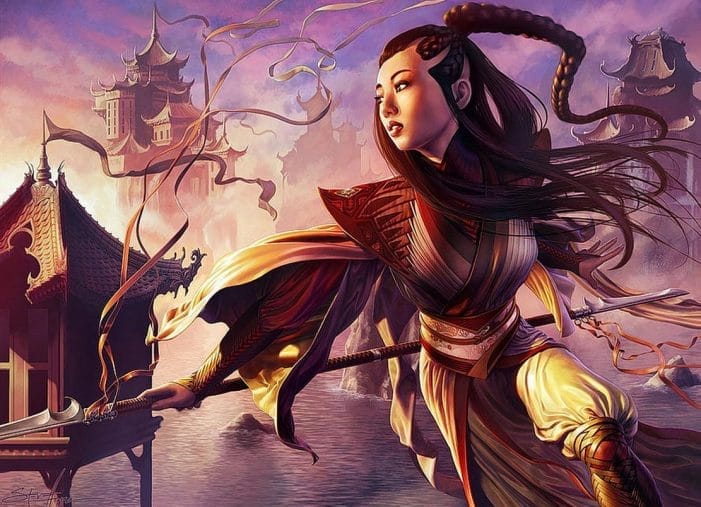
Mono-Red Burn: Sample Deck and Match-ups
TechRaptor staff have created a sample decklist on Tappedout.com for our readers to view. Take into account that this is a sample decklist - it is by no means definitive and doesn't have a sideboard as it doesn't take into account your meta environment.Knowing how our deck plays against other decks is very important knowledge to have, as it will guide us on what cards to sideboard in after the first match. Therefore, in each article of our primer series, we'll touch on how some of our match-ups go and what cards we can use in matches two and three; because the decks in Modern's Tier 1 change from time to time and are typically slanted towards linear gameplay, we'll focus on the decks that will be featured in our primer articles.
Mono-Red Burn (Aggro): As expected, the match-up against ourselves can go either way. The deck that has a faster opening hand and more burn will be the more successful of the two, and what we have in our sideboard doesn't matter much.
Mono-Black 8Rack (Control-Combo): A favorable match-up in match one, but they have access to multiple types of hand disruption and can very easily keep us from playing more than one card a turn. We need to be careful not to dump our hand and lock ourselves into 8Rack's prison.
Affinity (Aggro-Combo): Affinity outpaces us in match one, but we also carry a lot of cards that are good against Affinity and can sideboard them in for matches two and three.
Mono-Blue Merfolk (Aggro-Control): Merfolk also runs low converted mana cost creatures like Mono-Red Burn, and also runs creatures that buff each other, meaning if we want to kill their threats we have to waste many burn spells to do so. Merfolk also runs Spellskite and Kira, Great Glass Spinner mainboard, which diverts our spells and makes getting any burn to land a pain. Aether Vial also lets Merfolk players get around our Eidolon of the Great Revel, as it "puts it onto the battlefield" and Eidolon doesn't affect those cards.
Jeskai Harbinger (Control): This is a very favorable match-up for us. We're simply much faster than Jeskai Harbinger is, and their counter spells don't matter when we simply have so many burn spells at out hands.
Blue/Red Storm (Combo): Match-ups can go either way, depending on when you draw Eidolon of the Great Revel. If you have one in your opening hand, Mono-Red Burn is a great match-up against Blue/Red Storm as it relies on low converted mana cost "cantrips" (cards that draw more cards) to hit its combo pieces. Otherwise, we're racing against the "combo clock" to get the win, and we just don't have the disruption necessary to do that.
Black/White Tokens (Contol-Aggro): Match-ups can also go either way. Mono-Red Burn is in a favorable position to win match one, and has access to board wipe spells for tokens in matches two and three, but Black/White Tokens has access to lifegain and can stall with Control elements until the endgame where they are much more favorable to win.
Temur Scapeshift (Combo-Control): Burn typically does well here, as Temur Scapeshift focuses on stalling with Control elements to find its Combo pieces. As long as we have more burn spells than they do counter spells, we're in a good position to win. Our sideboard also carries hate for Temur Scapeshift's win condition Valakut, the Molten Pinnacle in the form of Molten Rain and Blood Moon.
Abzan Company (Combo-Aggro): Very poor match-up in all matches. Abzan Company has access to multiple "infinite" combos, such as "infinite life gain", which completely nullifies our burn spells. Naya Burn is in a much better place to win here, but it's still an uphill battle.
With the exception of Abzan Company, Merfolk, and Affinity, most of the match-ups can go either way, having strong first matches and questionable second and third matches. Gameplay requires putting careful thought into card sequencing and what to aim our burn at. Our biggest problem - and the reason why Naya Burn is preferred over Mon0-Red Burn - is the Enchantment spell Leyline of Sanctity. If our opponent sideboards it in for matches two or three and they have it in their opening hand, we've basically lost the game then and there.
The next article in TechRaptor's Modern Magic: The Gathering archetype primer series will be on the general Control archetype, and the Jeskai Harbinger deck.
Stay tuned to TechRaptor for more news and editorials on all things Magic: The Gathering.
What were your thoughts on this competitive Magic: The Gathering primer? Did you find it useful? Let us know in the comment section below.
Have a tip, or want to point out something we missed? Leave a Comment or e-mail us at tips@techraptor.net
